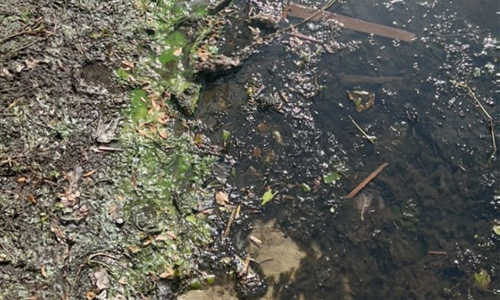It's a New Day in Public Health.
The Florida Department of Health works to protect, promote, and improve the health of all people in Florida through integrated state, county, and community efforts.
HEALTH OFFICIALS ISSUE BLUE-GREEN ALGAE BLOOM CAUTION FOR LAKE PEARL - CENTER
February 13, 2024

Contact:Kent Donahuekent.donahue@flhealth.gov407-858-1418
Orlando, Fla. - The Florida Department of Health in Orange County has issued a health caution for the presence of blue-green algae in Lake Pearl - Center. This is in response to a water sample taken by the Florida Department of Environmental Protection on February 12, 2024. The public should exercise caution in and around Lake Pearl - Center.
Blooms have the potential to produce toxins, and what triggers them to begin doing so remains poorly understood. For this reason, it is important to exercise caution, as bloom conditions are dynamic and could change at any time. The Florida Department of Environmental Protection (FDEP) collects algae samples from reported bloom locations for toxin analysis. Once completed, the results will be posted on the FDEP Algal Bloom Dashboard, and can also be viewed on the Protecting Florida Together website, where you can sign up to be notified of the latest conditions.
Residents and visitors are advised to take the following precautions:
- We do not recommend that you swim, wade, use personal watercraft, water ski or boat in waters where there is a visible bloom.
- Avoid getting water in your eyes, nose, or mouth.
- You should keep pets and livestock away from the waters in this location.
- Eating fillets from healthy fish caught in freshwater lakes experiencing blooms is safe. Rinse fish fillets with tap or bottled water, throw out the guts and cook fish to the appropriate temperature.
- You should not eat shellfish from this location.
What is blue-green algae?
Blue-green algae are a type of bacteria that is common in Florida’s freshwater environments. A bloom occurs when rapid growth of algae leads to an accumulation of individual cells that discolor water and often produce floating mats that emit unpleasant odors.
Some environmental factors that contribute to blue-green algae blooms are sunny days, warm water temperatures, still water conditions and excess nutrients. Blooms can appear year-round but are more frequent in summer and fall. Many types of blue-green algae can produce toxins.
Is it harmful?
Blue-green algae blooms can impact human health and ecosystems, including fish and other aquatic animals.
For additional information on potential health effects of algal blooms, visit floridahealth.gov/environmental-health/aquatic-toxins.
Find current information about Florida’s water quality status and public health notifications for harmful algal blooms and beach conditions by visiting ProtectingFloridaTogether.gov. Protecting Florida Together is the state’s joint effort to provide statewide water quality information to prioritize environmental transparency and commitment to action.
What do I do if I see an algal bloom?
The Florida Department of Environmental Protection collects and analyzes algal bloom samples. To report a bloom to FDEP, call the toll-free hotline at 855-305-3903 or report online.
To report fish kills, contact the Florida Fish and Wildlife Research Institute at 1-800-636-0511.
Report symptoms from exposure to a harmful algal bloom or any aquatic toxin to the Florida Poison Information Center, call 1-800-222-1222 to speak to a poison specialist immediately.
Contact your veterinarian if you believe your pet has become ill after consuming or having contact with blue-green algae contaminated water.
If you have other health questions or concerns about blue-green algae blooms, please call the Florida Department of Health in Orange County Call Center at 407-723-5004.
About the Florida Department of Health
The Department, nationally accredited by the Public Health Accreditation Board, works to protect, promote and improve the health of all people in Florida through integrated state, county and community efforts.
Follow us on X at @HealthyFla and on Facebook. For more information about the Florida Department of Health please visit FloridaHealth.gov.



Connect with DOH